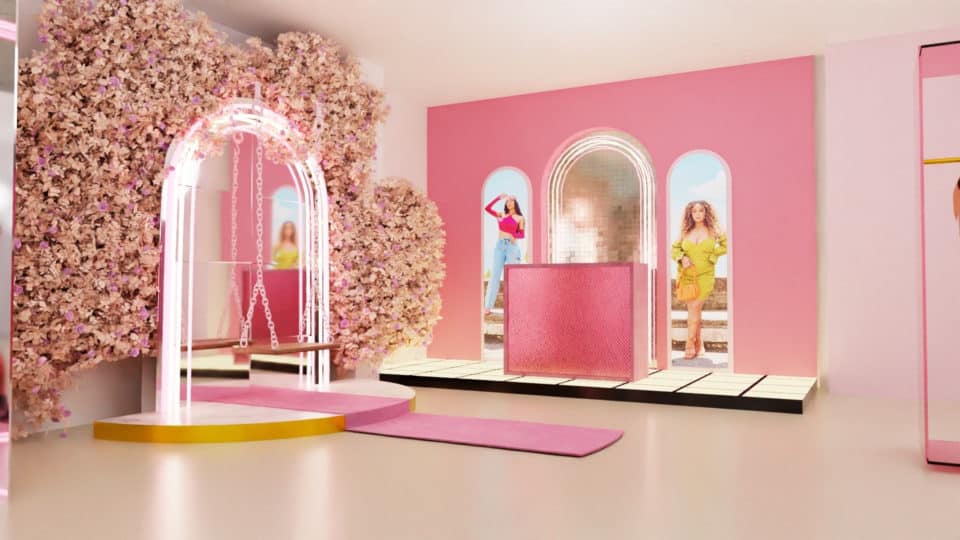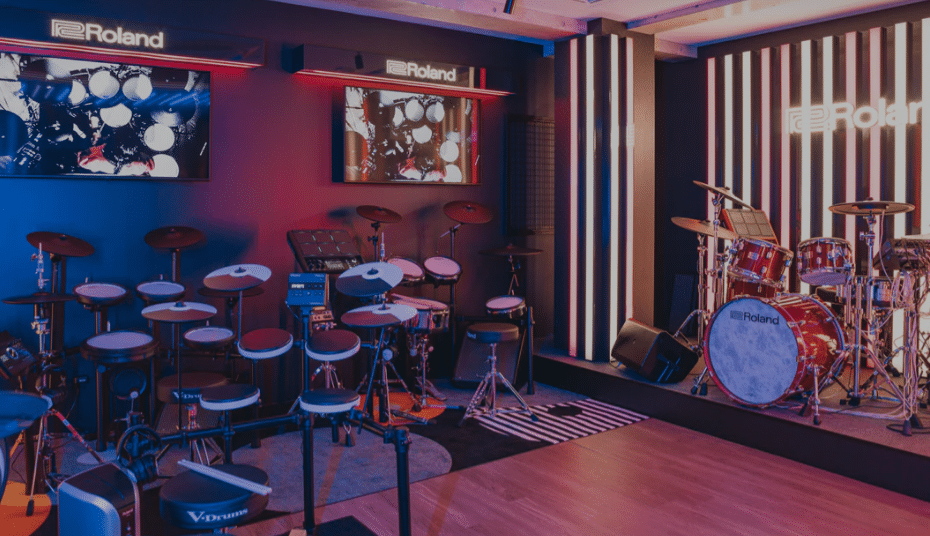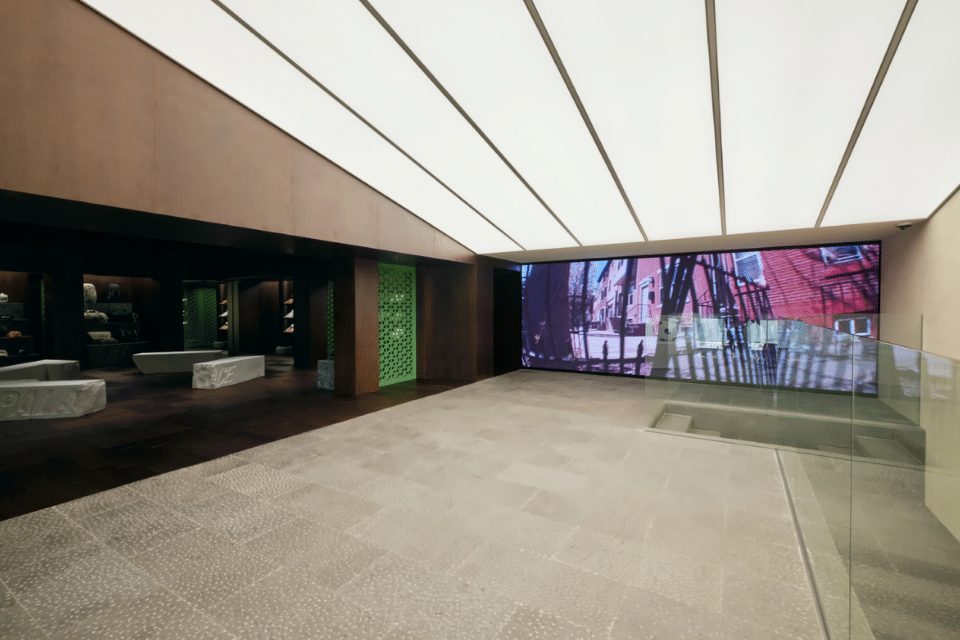43 Inspiring Retail Ideas of 2021

It would appear that we’re not going back to ‘normal’. Or certainly not any time soon.
The last 12 months have seen a continuation of many of the themes of 2020 with the global coronavirus pandemic remaining a dominant influence.
Despite this, 2021 retail had a lot to offer. With retailers having been forced to be more innovative by the pandemic, 2021 saw this mindset continuing in the form of inspiring new retail ideas.
These cover everything from e-commerce to physical retail and omnichannel, as well as retail tech and innovative ideas that are pushing the boundaries of what retail is.
Read on for our retail consultants‘ pick of 43 inspiring retail ideas from 2021:
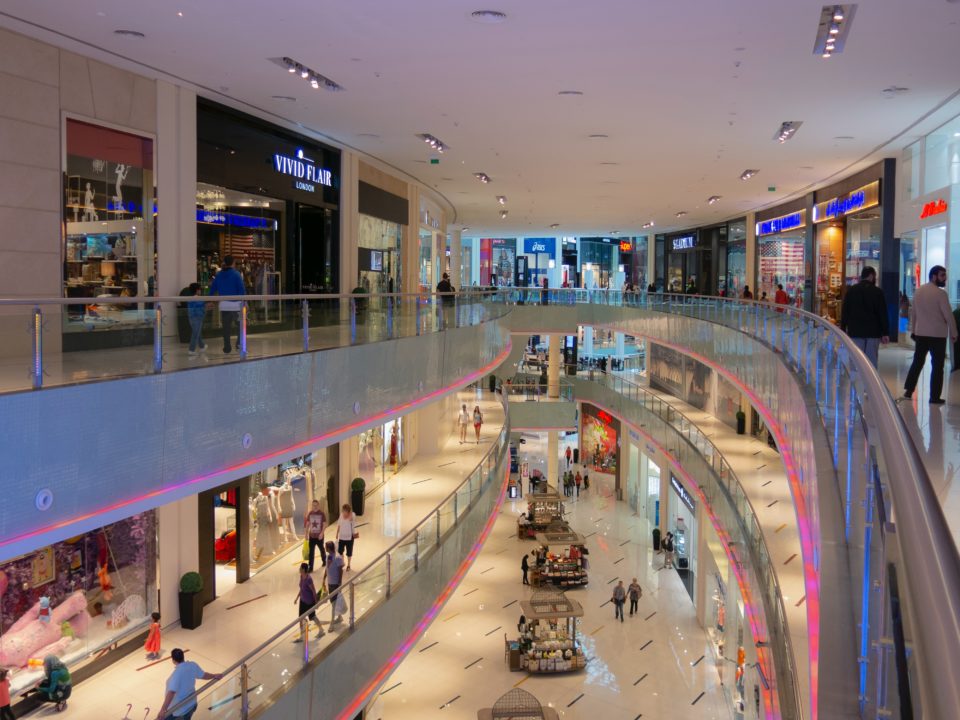
Physical retail
1. Anya Hindmarch Village
One of the most interesting approaches to brick-and-mortar retail in 2021 came from Anya Hindmarch.
The brand opened not one, but five, new stores on one street in London, creating its very own ‘village’.
It’s an incredible way to immerse the customer in a brand beyond just retailing. Alongside a traditional fashion boutique, there is a store for bespoke pieces and a space dedicated to sustainability and education. The fourth store is a concept space that started life as a hair salon but will change in use, and the final space is a café.
It’s a bold approach to physical retail that pushes the store further beyond selling and gives Anya Hindmarch room to scale up and down its presence in a different way.
2. Nike Refurbished
As consumers increasingly weigh up the lifetime impact of their purchases, brands are shifting their operations towards greater sustainability. This new programme from Nike is a perfect example.
Offered at 15 Nike stores in the US, customers can bring in like-new or lightly worn Nike products for the brand to clean, refurbish and resell them at a discount.
Items that are too well worn to reach the ‘close to new’ standards are donated or recycled into materials. It’s a simple idea, and certainly not the first refurbishment scheme in retail, but it’s good to see it reaching major brands like Nike.
3. Allure
Allure is a brick-and-mortar space from the Conde Nast published magazine of the same name.
It’s a great example of expertise and curation jumping from online to offline. The space showcases beauty and skincare products chosen by Allure’s editorial team, often inspired by the themes of the magazine’s issues.
A mix of tech including AR try-ons, a content creation hub and QR codes enhances the in-store experience with the type of additional information consumers are used to online. Notably, scanning a QR code by a product brings up more information, links to the brand’s social media and links to past editorial on the product.
It may not be a wholly new idea, but Allure’s editorial background means it is approaching physical retail from an information-first perspective. It understands that customers are looking for support in making the right purchases for them. Every store should be doing this.
4. McDonald’s ‘walk-through’ billboard
Last summer, McDonald’s ran a unique pop-up that reimagined the idea of fast food.
The brand put a billboard up at South Bank in London which had a window in it where customers could receive a McFlurry. While it was designed with social distancing in mind, we loved the idea of placing retail and brand interaction where the customer is.
It also was a more cost-effective approach to pop-ups as the billboard had a dual purpose as a large-scale piece of advertising outside of the pop-up hours.
5. Amazon Hair Salon
Amazon has continued its expansion into physical retail with the launch of its first ever halon salon.
Located in the East End of London, this experimental space is a functional hair salon as well as a showcase for new tech.
Customers can use AR mirrors to virtually try out new hairstyles and colours before their appointment. The product displays boast ‘point-and-learn’ tech which means customers can simply point at a product to access more information about it. They can also buy by scanning a QR code.
It’s a great look at how tech can change the traditional way of doing things and solve customer challenges such as knowing which hairstyle best suits them.
6. LV By Appointment
Commerce-at-home is a growing trend of bringing retail to the home. Louis Vuitton’s LV By Appointment concept is one of the best expressions of it so far.
This is a mini mobile store that can be driven to a customer’s home for them to shop without going anywhere. LV By Appointment comes with expert staff and has the same high-end design inside that you would expect from a Louis Vuitton store.
What we really like is that the whole experience is curated to the individual customer. All of the products inside are in the customer’s size, so if they find something they like they can try it on and buy it there and then.
If you’re a repeat Louis Vuitton customer, the products featured will also be tailored according to your personal taste and style. It’s a great concept that we’d like to see playing out more in retail, even within a fixed store.
7. Cuyana travelling pop-up
Fashion label Cuyana pushed the boundaries of physical retail with its travelling pop-up showroom.
In partnership with Toyota, the mobile store can be loaded onto a truck to be moved from location to location.
It’s a fantastic example of flexible retail and freeing the store from the fixed nature of traditional real estate. Cuyana’s pop-up can appear at malls and other purpose-built shopping destinations, but there’s also nothing to stop it from dropping into a park, train station, sports field or anywhere else people gather.
It’s also arguably a cheaper and more environmentally friendly take on pop-ups. As the format has taken off, fit-outs have become higher-end and often are built for one time use.
By adopting a mobile store format, Cuyana can spend less to visit more locations and be more flexible with how long it spends in each. It can also act as a data-gathering space to inform the brand’s future location decisions.
8. Old Spice Barbershop
In another example of brands moving into retail to build relationships, men’s grooming brand Old Spice has opened its first-ever physical space in Ohio.
The space is a fully functioning barbershop, as well as a retail space for Old Spice’s product range. The brand’s viral advertising campaigns are referred via various décor ‘easter eggs’ which helps with customer connection.
We were also interested in the in-store content studio which Old Spice uses to create social media and digital content for its online channels in real-time. It highlights how physical stores have a lot of underexplored value outside of what happens in the space itself.
9. Vashi
The new Covent Garden flagship from jewellery brand Vashi is a great compliment to its bespoke offering.
As a brand that values transparency, Vashi has placed a manufacturing workshop into the space so that customers get a behind the scenes look at how its products are made.
This feels particularly valuable when the piece being made is bespoke as it builds the connection the customer has to the item by allowing them to see the process of how it is made.
It’s a great example of building a retail space around the brand values and the experience that the retailer wants the customer to have.
10. Uncommon Store
This space from architects Atelier Archi@Mosphere and Korea’s Hyundai Department Store Group is a really nice take on the autonomous store.
Uncommon Store sells an eclectic range of common and uncommon items from across grocery and lifestyle. The design is a mix of the retro with the signage reminiscent of theatres and cinemas and futuristic, which makes it an eye-catching space.
Customers have to scan a QR code to enter the space, which also allows for a personalised experience. We see a lot of opportunity for the automated store to bring in more personalisation and recommendation for repeat customers.
11. Adidas Thrift & Ride
A great example of hybrid retail in 2021 came from Adidas and its ‘Thrift & Ride’ experience.
Part of a plan to reintroduce The Forum, a basketball sneaker introduced in 1984, Thrift & Ride saw four fashion influencers plus fashion mag editors travel around Brooklyn on a custom, 1984 city bus.
The event saw them visit three thrift stores, Awoke, Chickee’s and Indigo Style, before travelling to the Adidas Originals flagship. At each stop, the influencers put together outfits featuring The Forum sneakers.
The digital elements came from social media content with comments and votes encouraged and a competition to win a look from one of the influencers. Adidas also added QR codes to its membership program and the Adidas Originals store that customers could scan to see the items.
It was a well-pitched way for Adidas to update a classic style for a new, younger audience.
12. 7-Eleven DT Lab Store
7-Eleven launched a new space in Seoul to test the safety and effectiveness of digital technology concepts.
Called DT Lab Store, the store is based in the Lotte Data HQ and already features several new tech developments including facial recognition entry and payment.
Other systems include one that analyses customer movements to optimise operations and product positioning, and an AI system to detect real time inventory levels.
We love to see retailers adopting these sorts of test spaces as a way of making innovation quicker and more effective.
13. Starbucks and Amazon Go
In a first-time collaboration, Starbucks and Amazon have opened a new joint store in New York.
The space functions as a coffee shop, as one might expect from Starbucks, but with the addition of shelves of grab-and-go goods like sandwiches and snacks that use Amazon’s Just Walk Out tech to charge customers.
If you’re just ordering a coffee or picking up a mobile order, you complete the transaction as usual without any usage of Amazon’s tech. If you want to sit down, then you have to scan your phone on the Go powered turnstile to enter the rest of the store.
This then gives customers the freedom to grab snacks without having to join a queue and be charged for them when they leave.
It’s not a perfect execution by any means, but it is interesting to see the beginning of the blending of this type of automated payment tech into larger retail spaces.
14. Starbucks Shanghai
Starbucks has also opened a unique sustainable-focused store in Shanghai.
The brand worked to incorporate a circular design with half of the building materials recycled. There is also a modular bar that can be taken apart and moved elsewhere.
All coffee grounds from the space are recycled or composted, all the cups are reusable, and tech is removing the need for paper including digital menus and receipts.
Starbucks is also giving over space in the store to sharing products from local designers that are made using circular design principles.
It may only be one store at the moment but it’s encouraging to see Starbucks rethinking its store design in favour of reducing the environmental impact.
15. Sephora Beijing
For its new Beijing store, beauty brand Sephora upped the ante on what it means to have a flagship store.
The space is packed with services from hair bar to gifting to tech-powered fragrance discovery. But what really stands out is the offer of a location exclusive eye look that customers can access by booking an appointment.
Coupled with the stunning digital art design of the space, Sephora has created a true flagship space that customers will want to spend time in.

Omnichannel
16. Situ Live
Based in the Westfield shopping centre in London, Situ Live is an experiential retail concept that mixes physical retail with the benefits of digital.
The store features an ever-evolving array of interesting new products for customers to discover. It is divided into different ‘theatres’ which are themed around different lifestyle areas such as the kitchen, fitness and gaming.
While it’s not the only company taking this sort of approach, Situ Live is a really nice execution of storytelling. Customers get all the benefits of physically interacting with products and then can find out more or buy by scanning the product QR code.
17. L’Oreal Paris omnichannel store
We may have been talking about omnichannel for many years now, but much of retail is still behind the curve.
This new Shanghai space from cosmetics giant L’Oreal is a great example of a store designed with omnichannel at the heart.
Customers can use face-scanning tech to get a personalised skin analysis report and relevant product recommendations. These products can be bought then and there, ordered for delivery to the customer’s home or added to a digital shopping basket for future purchasing.
A nice touch is the use of WeChat to personalise the in-store experience and as a way to maintain a conversation with the customer after they leave. By tapping into a communication channel many customers already use, L’Oreal gives itself the best chance of building an ongoing relationship.
18. Shoebaloo shop windows
Simple can be so effective as demonstrated by Shoebaloo in Amsterdam.
During lockdown due to the coronavirus pandemic, the company turned its shop windows into offline shoppable catalogues. The windows simply showed images of different shoes – in a format that is similar to online search results – with a QR code alongside each one.
Customers could scan the code to open up the Shoebaloo website and find out more about the style they’re interested in. They can then order for delivery to their home.
It’s a nice use of physical real estate to keep selling outside of shopping hours and one that any retailer could employ today.
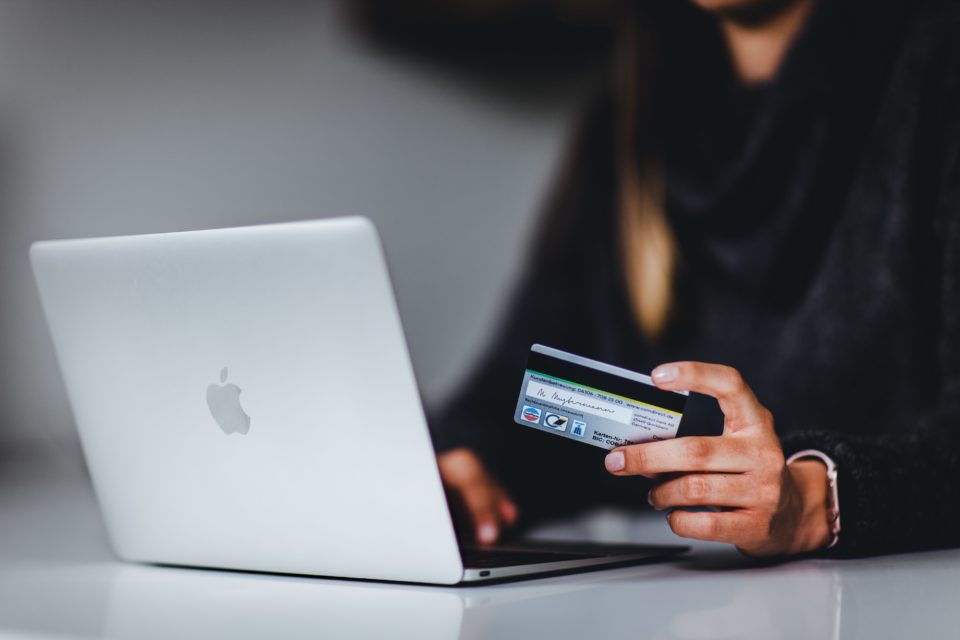
E-commerce
19. QVC YouTube livestream channel
Leading live shopping channel QVC has broken away from the traditional TV format with the launch of a livestream shopping channel on YouTube TV.
It’s the first such channel on YouTube TV and an example of how QVC has been steadily reinventing itself for a mobile-first, social media-using world.
But it’s also interesting as a signpost in the mainstream integration of livestream shopping in retail.
20. LABELS
This may be the best interpretation of superfast delivery that we’ve seen.
Berlin-based LABELS enables shoppers to buy products from local, independent brands and have them delivered to their home within 30 minutes. Because the products are made and stocked locally it’s a more sustainable option (compared to goods that have had to be shipped long distances to dark stores).
What’s really cool is the LABELS is also bringing in elements of commerce-at-home with customers able to try on their purchases when they arrive and immediately return products that they don’t want.
We also love that every product listed is given a sustainability score which can help customers to make more informed choices.
21. Virtual Harajuku
The city of Shibuya in Japan has expanded a virtual town project to include the neighbourhood of Harajuku.
Within this virtual space shoppers will be able to walk the streets of Harajuku via an avatar, experience live performances and visit fully shoppable retail spaces. This means that purchases they make virtually will then be delivered to them in the real world.
It’s a great example of how offline retail is being transferred to online, but also how to capture and communicate the ethos and vibe of a particular shopping area.
22. Pietra D2C platform
Ok, so this was conceived pre-2021 but this interesting D2C platform only came out of beta last year.
Pietra acts as a connector between individuals and some of the best manufacturers and factories all around the world. It also handles storage, shipping and other logistics. As such, it enables anyone from influencers to entrepreneurs to launch their own brand and reach consumers.
This intersection with the rise of D2C and influencer culture means it is vital brands and retailers pay attention to concepts like Pietra which could change the future retail landscape.
23. Walmart shoppable recipes
Walmart has tapped media company Meredith Corp. to make online grocery shopping more inspirational for customers.
This includes the ability for customers to take a photo of an ingredient that they have and generate recipe suggestions for using it. The solution can then be ordered for pickup or delivery by Walmart.
The partnership also extends to shoppable recipe ads on TikTok where consumers can tap a ‘Shop Now’ button to add all of their ingredients to a Walmart online shopping basket for purchase.
It has been noted by consumers in the past that grocery e-commerce is boring and that they struggle to discover new products and ideas. Initiatives such as shoppable recipes are a great way to generate food excitement as well as reduce waste.
24. Lollipop AI grocery e-commerce
UK start-up Lollipop AI is also hoping to change the way we shop for food with its online grocery marketplace.
Entering public beta last year, Lollipop AI allows consumers to shop by recipe, building meal plans and adding ingredients to shopping baskets automatically. It acts as a connector to partners such as Sainsbury’s and BBC Good Food with retailers managing order fulfilment.
The company envisages an entire food ecosystem including a cooking app to help you make the recipes. The marketplace approach enables it to partner with everyone from supermarkets to direct to farm to recipe boxes, online retailers and even quick commerce delivery firms.
With an increasing number of customer journeys starting in marketplaces, it will be interesting to see how this approach plays out.
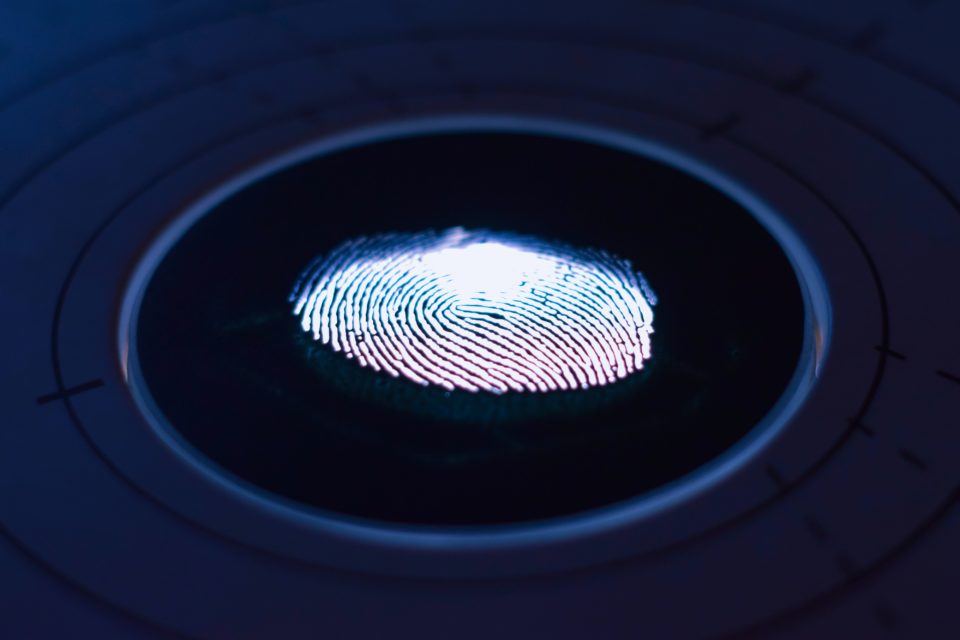
Retail tech
25. Yoox Net-A-Porter digital IDs
Luxury ecom retailer Yoox Net-A-Porter has introduced digital IDs to its private label collections.
These QR codes can be scanned by customers to access information such as where the item was made, what it was made from, how to care for it and more. It’s exactly what we should be seeing from every fashion retailer.
The IDs give customers a real sense of ownership of their purchases. The closer we feel to what we buy, the more likely we are to be considered in what we buy.
Provenance information is of increasing importance in a more sustainably minded world. But it also can help with resale–creating a record of ownership–and end of life management. Plus, the information attached to the QR codes can be constantly updated with styling advice and other useful content.
26. H&M Virtual Fitting Room
H&Mbeyond, the innovation arm of H&M in Germany, partnered with Nexr Technologies to trial virtual fitting room features in its Berlin and Hamburg stores.
Customers used the in-store body scanner and the AvatarCloud Fashion app to create their own virtual avatar based on their real-life measurements.
They could then virtually try on a range of 30 items, saving them the time and effort of trying to
Although a short-term pilot, it’s interesting to see this type of virtual tech starting to make its way into mainstream retail. H&M clearly used this as a data-gathering exercise which suggests that we may see other virtual fitting applications from it in the future.
27. Machine-A AR boutique
Concept store Machine-A embraced augmented reality for a virtual store in partnership with Institute of Digital Fashion that showcased the work of up-and-coming UK designers.
Customers could access the store by scanning a QR code which would open up a digital store that could be explored in AR. As well as the designers’ collections, the digital experience included messages from the designers explaining their inspiration and even unfinished pieces.
The digital store didn’t have an integrated buying capability, which was missed, but what was particularly interesting is that the QR codes for the store were displayed on posters and billboards across London. This is a glimpse of how tech allows you to place the door to a store anywhere, creating opportunities to push retail into new environments.
28. SK-II City
One 2021 retail trend was an increase in virtual worlds. One of the best was SK-II City from skincare brand SK-II.
SK-II City is a virtual city inspired by Tokyo. Customers can explore the environment and access all sorts of backstage and special content, including six new animated films featuring Olympic athletes. They can also talk to an AI assistant and there is a gamification element where customers collect ‘miracle drops’ that translate to charity donations.
SK-II plans to also add in a retail element so that customers can buy products in the space.
It’s a really nice example of how virtual environments can be used to connect with customers in new ways.
29. Nike Acquires RTFKT
The metaverse is retail’s biggest talking point right now. It’s clear that certain brands are taking the concept seriously as shown by Nike’s acquisition of virtual goods creators RTFKT.
In particular, RTFKT is known for its viral digital sneaker designs which clearly fits in perfectly with Nike’s brand activities. RTFKT’s knowledge of AR, NFTs, blockchain and more will be incredibly valuable to Nike as it looks to grow its metaverse activities.
It’s significant because it feels like it will open the door for other brands and retailers to make similar acquisitions of their own.
30. Vans Channel 66
Livestreaming is another element of retail that saw a major boost due to the pandemic.
One brand who has adopted this approach is Vans. Channel 66 is unusual as it is an always-on digital broadcast rather than being streamed at specific times and days.
The channel features live performances, workshops and conversation about everything from music to sports with a focus on the local communities in Chicago, Los Angeles, New York and Mexico City.
We like to see brands pushing livestreaming further as a way of building community rather than just selling.
31. Browns personalisation
This new London store from luxury retailer Browns is a lovely example of using tech to personalise the customer experience.
Utilising Farfetch technology, the store enables staff to access customer wish lists, past purchases and browsing history which they can use to provide a more personalised service in the store. Customers can also use the company app to make purchases or book a service.
The aim is to put the human element at the forefront but empower staff to talk to customers in a more personal way.
The new Browns store also features lots of relationship building elements such as a restaurant and grooming services.
While none of this may sound like it’s brand new, the reality is that not many retailers are doing this – or doing it well. Browns is.
32. Walmart talk-to-text
Walmart’s tech incubator Store No8 is testing new talk-to-text technology that will allow customers to add products to their grocery list just by saying what they want.
What’s really smart is that the specific product chosen and added to the list will be based on the shoppers’ preferences. Walmart gave an example of a customer that asks to add Band-Aids to the cart and the AI chooses superhero styles as it knows they are the household favourite.
Walmart sees the tech as a timesaver enabling customers to quickly add items as they think of them to their shopping list by just saying what they want. But the company is also learning how customers engage conversationally.
33. Dyson Demo VR
Dyson has launched an experience that lets customers test out its range of hair appliances in virtual reality.
Dyson Demo VR is built on the same visualisation and simulation tech that Dyson’s engineers use themselves when testing, developing and prototyping new products.
The plan is to integrate the ability to talk to a real-life store associate and to buy directly through the VR experience in the future. Dyson will also expand the experience to include its vacuum cleaners and other products.
VR gives consumers the opportunity for a more in-depth experience compared to a standard website. Dyson Demo VR requires the use of an Oculus headset, which does pose a barrier to mass adoption, but we’re intrigued to see where Dyson goes with it.
34. Neiman Marcus/Hypebeast virtual showroom
Department store Neiman Marcus and culture platform Hypebeast have teamed up on a shoppable, virtual showroom for footwear.
Eleven luxury brands created an exclusive design for the virtual space which uses a laboratory/art gallery design for its shop floor. Customers can explore each shoe in detail via interactive elements and annotations that highlight unique design elements.
It’s interesting to see a legacy retailer like Neiman Marcus embracing new ways of connecting with consumers digitally. For Hypebeast the partnership is a way to expand its retail knowledge, as well as provide interesting new content to its audience. In both cases, the learning potential of the initiative is huge.
35. David’s Bridal 24-hour YouTube channel
The latest in a line of new digital services and initiatives from David’s Bridal is a unique 24-hour YouTube channel.
Delivering content whatever time of the day or night couples happen to be looking for inspiration, the YouTube channel will feature submissions and content from married couples, as well as wedding vendors.
YouTube has become a key reference point for people looking for inspiration, advice and how-to information. David’s Bridal is tapping into this with its always on YouTube channel.
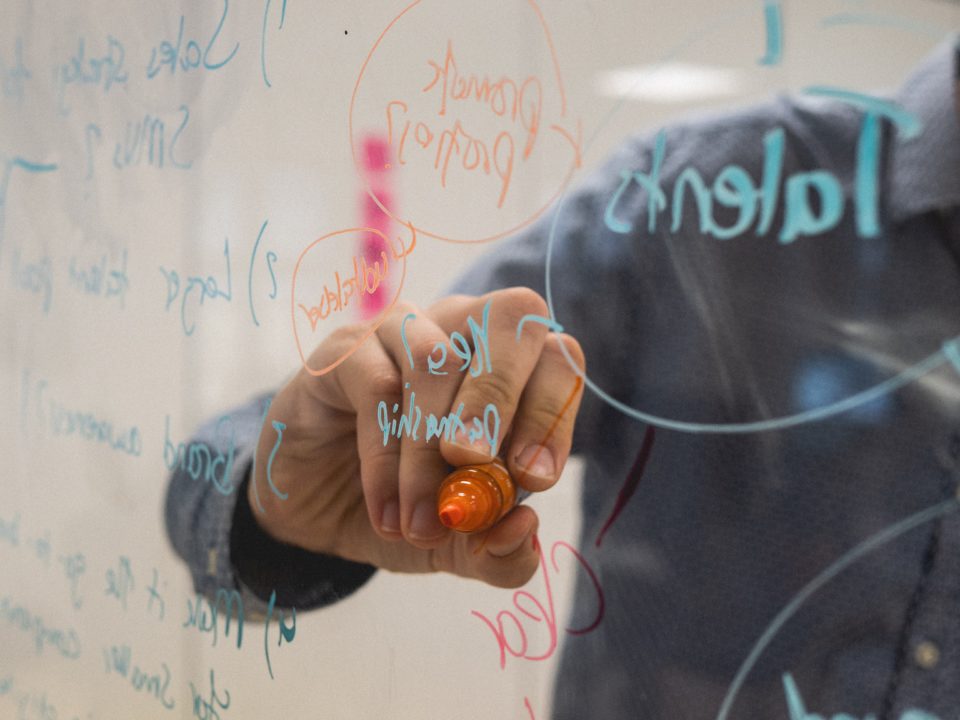
Retail innovation
36. Haeckels’ Grown to Order gift sets
We’re big fans of sustainable skincare company Haeckels and this latest idea is no exception.
The company launched a range of Grown to Order gift sets ahead of the holiday shopping season where the packaging was genuinely grown to order from mushrooms. This means that Haeckels waits until an order is placed to grow the packaging and ship the products.
There are a range of five gift sets, all named after different microbiota, and each one comes in packaging that is designed to mimic that microbiota.
The packaging is 100% compostable but can also be reused. Best of all there is no excess packaging from the manufacturing process. It’s this type of bold thinking that really shows what is possible in the quest for sustainability.
37. Fashion Circular Design Tools
Retailers cannot ignore the sustainability conversation that has been growing in recent years. Last year it was interesting to see a number of fashion retailers – who operate within the fast fashion sector that dominates a lot of sustainability conversation – launch new tools to support the shift towards being more environmentally friendly.
Asos teamed up with the Centre for Sustainable Fashion to release its Circular Design Guidebook which aims to help designers, students and fashion brands create circular design fashion. H&M also launched its own circular design tool – the Circulator.
We expect to see more brands taking the initiative to provide information to their partners that can aid in more sustainable design.
38. ASU-Starbucks Center for the Future of People and the Planet
The name is a bit of a mouthful but this new concept from Starbucks is interesting.
The brand has teamed up with Arizona State University (ASU) to create a research centre that ultimately wants to find ways to design, build and operate Starbucks stores that have a positive global impact.
The nine Starbucks stores on ASU’s four campuses will act as innovation labs to test the ideas that the centre comes up with.
The initiative presents Starbucks as a brand that is actively looking to improve its sustainable credentials, but it’s also an important reminder of the need for retailers to use a test and learn approach in order to innovate more quickly.
39. Lush quits social media
Lush has always been a brand of strong values and its latest initiative is a perfect example of that.
The company has announced that it will stop posting on social media, namely four of the biggest platforms – Facebook, Instagram, Snapchat and Tiktok – across 48 countries. It has called this initiative the Global Anti-Social Media Policy.
Lush isn’t swearing off all things online, or even social media, as it will continue to post on YouTube, utilise Pinterest, send email newsletters and use Twitter for customer service.
Will Lush ever come back to the social media big four? We can’t say. But this is an interesting stance that we may see other brands adopt. At the very least Lush’s new policy may motivate others to think about the role these platforms play in their strategy, how much they rely on them and whether they can reduce that.
40. IKEA buys forest
IKEA owner Ingka Group has acquired just over 10,000 acres of forestland in southeast Georgia with the aim to protect it from development.
The land is home to over 350 plant and wildlife species including some endangered species.
This isn’t the first such purchase Ingka has made having acquired 612,821 acres of forestland in the US and Europe since 2014. As a furniture company, which uses a lot of wood in its products, IKEA’s forest conservation suggests an understanding of the need to minimise the negative impact of what it does.
As the spotlight continues to be shone on retailers’ sustainability practices, it may be that more brands follow in IKEA’s footprints with these large-scale initiatives.
41. Nona Source
There are some ideas that you hear and wonder why they hadn’t been done before.
Nona Source from LVMH is one of them. It is an online shop selling unused fabrics from LVMH’s top luxury brands including Dior, Louis Vuitton, Givenchy and Stella McCartney.
It’s only available to European customers and some business owners, which includes fashion designers.
Nona Source has been created as a more sustainable way to get rid of unsold fabrics. It’s a simple idea, but incredibly worthwhile and we hope to see more brands adopting the same approach.
42. Christopher Raeburn Community Design Hub
Fashion designer Christopher Raeburn launched a community design hub in London’s Stratford-based East Village.
Called The Lab E20, the space hopes to bring together innovators in fashion, tech and design from across London to help reduce waste and rethink material usage in fashion.
We like that this isn’t just another store but a place for open communication and collaborative thinking. A series of exhibitions, events and workshops help to anchor the concept and generate buy-in/ownership outside of Raeburn.
43. Christy Dawn Land Stewardship program
We love this new concept from fashion label Christy Dawn.
The brand has invited its customers to contribute $200 each to cover the costs of a cotton farm in India. Christy Dawn will grow the crops regeneratively and once the cotton is harvested the customers will be paid in store credit. A good harvest could mean they get more back than they invested.
What’s more, they could buy a dress made of cotton they paid to grow.
By allowing customers to buy into the farming process, Christy Dawn is giving them ownership over the products they buy. They’re also educating them on what it takes to grow cotton and produce clothing, which can help them make more informed buying choices.
We’d love to see more brands giving customers a chance to help invest in the products that they love.
Want to change the future of retail? Get in touch now to see how we can help your retail business go further.

